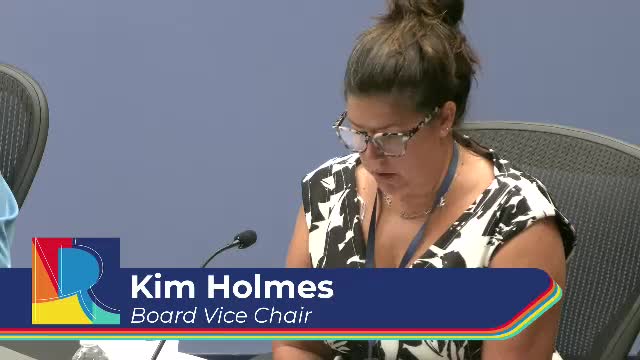Board in turmoil as member faces potential removal
August 26, 2024 | Robbinsdale Public School District, School Boards, Minnesota
This article was created by AI summarizing key points discussed. AI makes mistakes, so for full details and context, please refer to the video of the full meeting. Please report any errors so we can fix them. Report an error »

During a recent government meeting, tensions escalated as board members grappled with procedural disputes and allegations of misconduct. The discussions highlighted a growing frustration over the lack of established rules and policies, which some members argued hindered their ability to perform effectively.
One board member expressed concern about the unproductive nature of ongoing discussions, describing them as devolving into a \"he said, she said\" scenario. This member emphasized the importance of having clear rules and guardrails to facilitate productive dialogue, stating, \"I just would like to do my job and I cannot when we don't have rules.\" The call for structured procedures was echoed throughout the meeting, with members expressing gratitude for the ability to record meetings to clarify discussions and decisions.
The meeting also saw a motion to censure a fellow board member, Director Bassett, for alleged violations of the member code of conduct. However, the motion resulted in a tie vote, ultimately failing to pass. This outcome underscored the divisions within the board, as members were split on the issue, with three voting in favor, three against, and one abstaining.
In a subsequent motion, a proposal was made to remove another board member, Director Brooks, citing violations outlined in an investigation report. However, legal counsel clarified that such a removal would require a due process hearing, including proper notification and an opportunity for the member to defend themselves. This procedural requirement complicated the motion, leading to further discussions about the seriousness of removing an elected official.
The meeting concluded without resolution on the proposed removals, highlighting the ongoing challenges the board faces in addressing internal conflicts and maintaining governance standards. As members continue to navigate these issues, the need for clear policies and effective communication remains paramount.
One board member expressed concern about the unproductive nature of ongoing discussions, describing them as devolving into a \"he said, she said\" scenario. This member emphasized the importance of having clear rules and guardrails to facilitate productive dialogue, stating, \"I just would like to do my job and I cannot when we don't have rules.\" The call for structured procedures was echoed throughout the meeting, with members expressing gratitude for the ability to record meetings to clarify discussions and decisions.
The meeting also saw a motion to censure a fellow board member, Director Bassett, for alleged violations of the member code of conduct. However, the motion resulted in a tie vote, ultimately failing to pass. This outcome underscored the divisions within the board, as members were split on the issue, with three voting in favor, three against, and one abstaining.
In a subsequent motion, a proposal was made to remove another board member, Director Brooks, citing violations outlined in an investigation report. However, legal counsel clarified that such a removal would require a due process hearing, including proper notification and an opportunity for the member to defend themselves. This procedural requirement complicated the motion, leading to further discussions about the seriousness of removing an elected official.
The meeting concluded without resolution on the proposed removals, highlighting the ongoing challenges the board faces in addressing internal conflicts and maintaining governance standards. As members continue to navigate these issues, the need for clear policies and effective communication remains paramount.
View full meeting
This article is based on a recent meeting—watch the full video and explore the complete transcript for deeper insights into the discussion.
View full meeting
